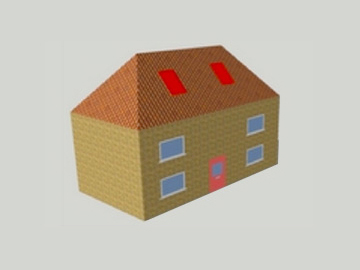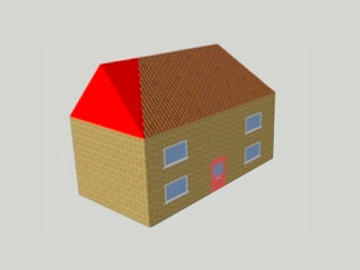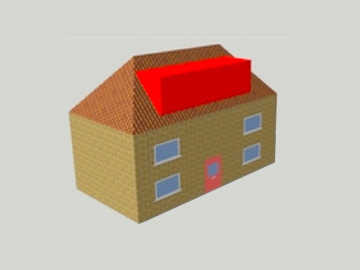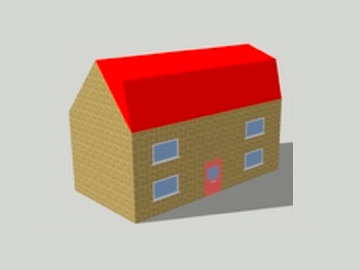Planning Permission for London loft conversions
Planning permission for loft conversions in London is not normally required. However, permission is required where you extend or alter the roof space and it exceeds specified limits and conditions.
Under new regulations that came into effect from 1 October 2008 a loft conversion for your house is considered to be permitted development, not requiring an application for planning permission, subject to the following limits and conditions:
- A volume allowance of 40 cubic metres additional roof space for terraced houses
- A volume allowance of 50 cubic metres additional roof space for detached and semi-detached houses.
- No extension beyond the plane of the existing roof slope of the principal elevation that fronts the highway.
- No extension to be higher than the highest part of the roof
- Materials to be similar in appearance to the existing house
- No verandas, balconies or raised platforms
- Side-facing windows to be obscure-glazed; any opening to be 1.7m above the floor.
- Roof extensions not to be permitted development in designated areas
- Roof extensions, apart from hip to gable ones, to be set back, as far as practicable, at least 20cm from the eaves.
If you require architectural drawing services we would recommend TLC Planning and Design, part of The TLC Group.
TLC Planning and Design provide services for both residential and commercial clients in North London, Essex, Hertfordshire and the surrounding areas. Including design and planning for home renovations, extensions, garage conversions, loft conversions and new builds.
For your building planning and design needs visit the TLC Planning and Design website.
Types of loft conversion
Velux
Velux and rooflight are the same conversions. This type of loft conversion is generally very cost effective and does not need planning permission.

Hip to Gable
A hip to gable loft conversion requires major changes to the roof. A gable wall is built up to the ridge point and a new section of the roof is built to fill in the gap.

Dormer
A Dormer loft conversion is an extension to the existing roof, allowing for additional floor space and headroom in the loft conversion. Internally a dormer will have a horizontal ceiling and vertical walls compared to the normal diagonal sides of a loft conversion. In attics that have limited space or head height a dormer loft conversion will provide additional space that can make a conversion easier.

Mansard
A mansard roof has two slopes, the lower slope is close to vertical at 72 degrees and the top section of the roof is almost horizontal. A mansard loft conversion makes a lot more available space within your loft.

Planning permission FAQs
Do I need planning permission for my loft conversion?
As a general rule, if you wish to make additions or extensions that will affect the external appearance of your property you will need planning permission. More restrictions apply to flats and maisonettes than to a house. Internal alterations do not usually require permission, although you do need planning permission if you want to convert your property into separate dwellings i.e. flats or bed-sits. Not all loft conversions require planning permission.
If you live in a conservation area or your building is listed planning permission may be required for work which would normally not require it - always check with your local authority. If you have a situation which you think falls outside of these guidelines or are in any way unsure, it is best to contact your local authority who will give you the necessary guidance. Planning issues can be contentious and if you proceed without any required consents you may be required at your cost to demolish or significantly alter any development undertaken.
What is permitted development?
You may be able to make certain alterations on a house (as opposed to a flat or maisonette) without the need for planning permission. This is termed "permitted development" and it applies to an "original house" i.e. a house as it was first built, or as it stood on 1st July 1948 if it was built before that date. If an "original house" has not been extended (including loft conversions) you may be able to develop your property under these rights. As permitted development is subject to limits on height and volume, and has many permutations, we advise you consult your local authority and/ or an architect.
Your local authority may have withdrawn permitted development rights if you live in a conservation area.
What will I be allowed to build?
Again, this is subject to many variables, and your initial enquiries should be directed to the local authority and an architect. You can gain a general indication of what is likely to be approved by looking at other approved development of properties around your local neighbourhood.
How do I go about getting planning permission?
Contact the local authority who will provide you with the relevant forms and guidance or have us arrange it all on your behalf.
How long will it take for planning permission to be granted?
Generally, the local authority should notify you of their decision within eight weeks.
What if my neighbours object?
The local authority will notify your neighbours and any other interested parties for their consideration. Your application will be available for inspection by the public at the local authority offices and will be considered by the council officers on the basis of planning reason. They cannot reject your application simply because some or even many people oppose it. The local authority must always give reasons if it refuses your application or subjects it to certain conditions.
What is a party wall agreement and will I need one?
A party wall is an existing wall or structure shared with an adjoining property e.g. the common wall between two terrace houses. The term also includes the separating floor between flats (a "party structure") or a garden wall (a "party fence wall" - does not include wooden fences).
As most loft conversions may affect the structure of a party wall you will need to notify all the adjoining owners of that party wall. Such work might typically include:
- Cutting into a wall to insert a beam for a loft conversion.
- Altering the height of a party wall
- Demolishing and rebuilding a party wall (often to carry an extension)
- Underpinning a party wall.
Minor works such as putting up shelves, or drilling and fixing plugs and screws do not require a party wall agreement.
How do I go about getting a party wall agreement?
It is always sound advice to consult your neighbours when intending to carry out any major works to your property. In our experience keeping your neighbours informed in advance of any notification from planners, etc., can often avoid disputes further down the line.
The next step is to give notice in writing to all owners about what you intend to do, when you intend to do it, and how it will impact on them (you could include a copy of any plans). You need to serve notice at least two months before the work to the party wall is due to start. The adjoining owner may agree to work starting earlier but is not obliged to. Agreement from adjoining owners must be gained in writing.
If agreement on the work is not reached, an "agreed surveyor" can be appointed to draw up an "award". This award will typically set out the work to be done, how and when it will be carried out, and will include a report on the existing condition of the adjoining property (in case of a dispute arising about damage after the work has been completed). Alternatively each party may appoint their own surveyor (although as the cost is usually incurred by the person who is proposing the work, it may be in their interest to use an agreed surveyor.)
For further information visit the relevant page of the government's online planning and building regulations resource by clicking here
Who are building control and why/when do I need to contact them?
Each local authority will have a building control office whose role it is to ensure that any building work conforms to building regulations, this includes the use of approved materials, design and construction methods. From a legislative perspective, building work is defined as:
- The erection or extension of a building
- An alteration to a building
- A material change of use of a building
- The provision, extension or alteration of a controlled service or fitting (drainage, boiler or other heated appliance, unvented hot water systems, mechanical ventilation systems) and replacement windows.
Internal alterations such as layout changes (even non-structural ones) may affect fire safety so it is worthwhile contacting the local authority building control office and discussing what you have in mind with them before you decide on the building work. Otherwise your new layout may require further work (for example, additional fire doors) that render your proposed changes unworkable or not financially viable.
General minor repair work involving replacing like for like does not normally require approval. If in doubt contact your local authority building control office.
This information is provided for your general interest only. The Loft Converter disclaims all responsibility and liability (including for negligence) in relation to use of the information on this site.




